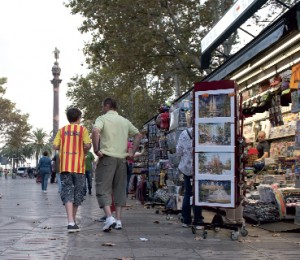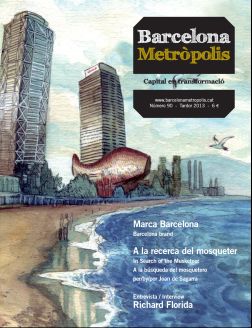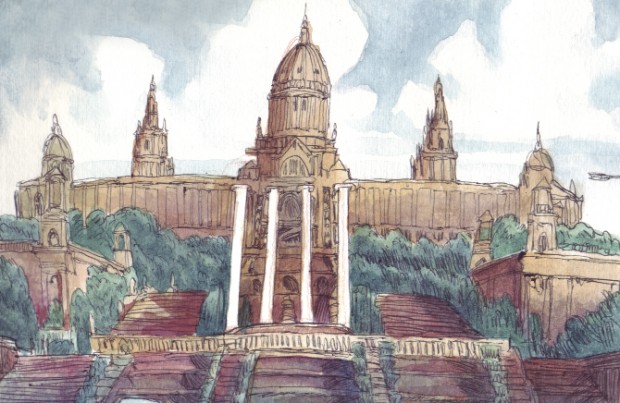Brands are portfolios of meanings unto which we dump countless attributes and perceptions, in many cases over years or decades. But when it comes to the brand of a country, the matter becomes more complicated because those take centuries to build. When was the construction of the Catalonia and Barcelona brands undertaken?
Trademarks or brands are handled professionally and have a far-reaching strategic intent, or at least the successful ones do. Conversely, country brands have never actually been managed, and in many cases their attributes and values have been solidified gradually by the vicissitudes of history, unmentored. That is how things worked until the twentieth century. As of the end of the twentieth century, and particularly as of the beginning of the twenty-first, country brand managers, the politicians and institutions that are responsible for managing them, realised that a much more professional and precise approach was called for. And that is what gives this article meaning.
It is precisely at this point when we must question the mutual relationship between the Catalonia and Barcelona brands and the joint strategies that need to be developed (or not…).
Can these two brands be managed separately? My answer is categorical: it should not be possible, and neither would doing so be advisable. It is clear that the ongoing political process in Catalonia is driving us to look for an integrated strategy between both brands. For this reason, and now more than ever, it is necessary to define the roadmap to integration, or rather a cobranding, which strikes me as being essential at this moment in time.
To implement cobranding the first question to be answered is whether the brands involved are antagonistic or almost antagonistic. If they are, then we had better forget it. There have to be points of contact or shared brand values, a certain convergence of attributes between both brands, otherwise such an undertaking is simply impossible. Can you imagine a SEAT by Rolex? Perhaps an Aston Martin powered by Omega?
Barcelona was the capital of Catalonia long before it was the second city of Spain. Barcelona has never been the joint capital of its current state, either because the Catalans did not want it to be or because the institutional power of Spain did not let it. Probably, had the Spaniards been smarter and accorded Barcelona this condition which it has never had, then the impending problem of sovereignty would now be totally neutralised. The immense power Catalonia has when it faces Spain is partly due to the fact that Catalonia is backed up by a brand and an internationally renowned city like this. Barcelona has filled this power gap, in terms of state, by fulfilling its mission as the capital of Catalonia and it is from this perspective that Barcelona’s “Catalanness” cannot be overlooked. It is the aroma, the essence and the compendium of all things Catalan, even though many people have always doubted this.
Having established the “Catalanness” of Barcelona, we should now analyse Catalonia’s “Barcelonaness”. The Catalans, sometimes reluctantly, other times more forcefully, wanted Barcelona to be their capital. This has virtually never been questioned. Barcelona has always been the model for the Catalan region and counties. It could hardly be otherwise when the city’s metropolitan area accounts for more than 50% of its total population.
Barcelona belongs to Catalonia and Catalonia to Barcelona. This is what guarantees that many of the values and attributes of both brands are shared. They are not antagonistic; they complement each other perfectly. This is the key to ensuring the viability of a cobranding strategy.

© Albert Armengol
The construction of a joint and shared image for Barcelona and Catalonia must be promoted by the Government and institutions, and cannot simply depend on such individual initiatives as the inclusion of the four stripes of the flag on the Barça away strip.
However, what should this strategy consist of? For what purpose should we deploy it? What benefits can it bring us? For the domestic market, the Catalan market, this strategy serves no purpose. But it is basic to the international strategy of the Catalonia brand. The visibility of the Catalonia brand (and consequently of its cause) could be greatly amplified if the international community realised that the Barcelona brand is a vital part of the brand portfolio of the Catalonia enterprise. The day that the world’s civil society becomes aware of this reality, the international recognition of Catalonia will be multiplied.
Scotland, by way of a different example, is an international brand that does not need the support of a brand of the magnitude of Barcelona to be recognised. Scotland has legends, it has national teams and it has Sir William Wallace, among other things. Moreover, the city brands of Edinburgh and Glasgow, which are well behind Barcelona, are more than sufficient.
If we fail to realise that international brand awareness of Catalonia is still very low, we will never hit upon the right strategy, which must be to leverage this cobranding immediately. Some might say that what is called for is a branding plan for Catalonia; that we should forget about Barcelona, which is already well enough consolidated. But anyone who says that is simply unaware of the huge and impossible effort involved in building up a brand from scratch in a couple of years. The amount of communication resources required (which means huge economic resources) would render the project unworkable.
However, climbing onto the Barcelona train would make everything much easier. “Catalonia is the land of Barcelona” exemplifies what I am saying. I know that this assertion might offend certain people, but the way things stand we need to be pragmatic. Everyone in Catalonia (and even in Spain) knows that Barcelona is what it is thanks to the energy of the Catalans and Catalonia’s contribution. Now it is time for the rest of the world to know this. Everyone, or almost everyone, knows Barcelona. They even know many of its most important features. But until outsiders realise that Barcelona is not a city in Spain, but rather the capital of Catalonia, we will not be able to tap into its power.
Catalonia must take Barcelona by the hand and they must walk the world together. The possibility of the Barcelona-Pyrenees Winter Olympics is a unique opportunity in this regard. These Olympic Games, unlike the 1992 event, could put Catalonia on the map. Still, the year 2026 (if not beyond) is a long way off in time – time that we do not have. Above all, this eventuality does not depend on us alone. Long before that, we will need to explore creative communication channels that bolster this intimate cobranding.
The fact that Barça (even more international than the Barcelona brand itself) bears the Catalan flag on its away strip is an initiative that benefits us greatly, but the club is a private institution and as such its decisions are sovereign. If its members decided to do so, tomorrow it could wear the Spanish flag.
What must our government and our institutions do, directly and unequivocally, to further this joint image? Imagination, determination and creativity can work wonders. It is up to them, but they should move now as time is running out.




